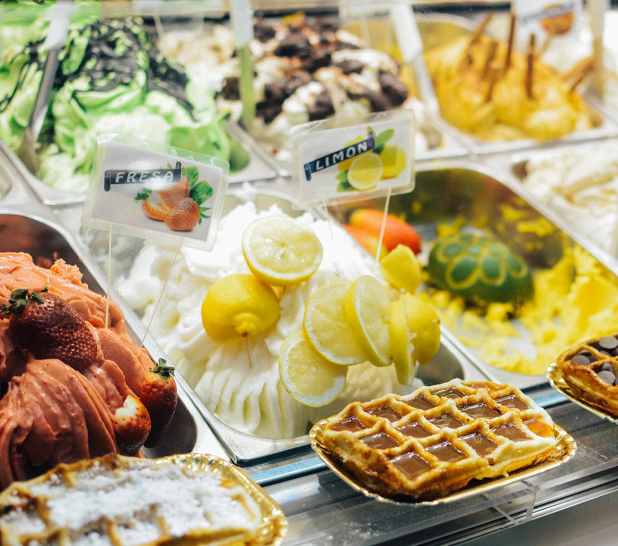Buffet
Variations
There are many different ways of offering diners a selection of foods that are called "buffet" style meals. Some buffets are "single pass only", but most buffets allow a diner to first take small samples of unfamiliar foods, and then to return for more servings if desired. To avoid misunderstandings in commercial eating establishments, the rules and charges are often posted on signs near the buffet serving tables.
- One form of buffet is to have a display counter or table filled with plates containing fixed portions of food; customers select plates containing whichever dishes they want as they walk along. The food display may either be staffed, or the customers may pick up the food plates themselves. This form is most commonly seen in cafeterias. Another derivative of this type of buffet occurs where patrons choose food from a buffet style layout and then pay based on what was chosen (sometimes based on the weight of the food, or color-coded plates).
- A variation occurs in a dim sum house, where seated patrons make their selections from wheeled carts containing different plates of food which the staff circulate through the restaurant. Another variation is a conveyor belt sushi restaurant, where seated patrons select dishes from a continuously-moving conveyor belt carrying a variety of foods. In another variation, Brazilian rodízio style buffets feature roving waiters serving churrascaria barbecued meats from large skewers directly onto the seated diners' plates.
- The "all-you-can-eat" buffet is more free-form; customers pay a fixed fee and then can help themselves to as much food as they wish to eat in a single meal. This form is found often in restaurants, especially in hotels. In some countries, this format is popular for "Sunday brunch" buffets.
- A so-called Mongolian barbecue buffet format allows diners to collect various thinly-sliced raw foods and add flavorings, which are then stir-fried on a large griddle by a restaurant cook.
- Some hot pot restaurants offer all-you-can-eat buffets, in which diners order plates of thinly-sliced raw foods and flavorings, and cook them in boiling pots of soup at their tables.
- A salad bar is commonly offered in delicatessens and supermarkets, in which customers help themselves to lettuce and other salad ingredients, then pay by weight. Sometimes only cold foods are offered, but often warmed or hot foods are available at a "hot foods bar", possibly at a different price by weight.
- Open buffets are often associated with a celebration of some sort, and there may be no explicit charge or the cost may be included in an admission fee to the entire event. Art show openings at galleries and museums are often accompanied by a modest buffet for invited guests.
As a compromise between self-service and full table service, a staffed buffet may be offered: diners carry their own plate or tray along the buffet line and are given a portion by a server at each station, which may be selected or skipped by the diner. This method is prevalent at catered meetings where diners are not paying specifically for their meal.
Alternatively, diners may serve themselves for most prepared selections, but a carvery station for roasted meats is staffed. Some buffet formats also feature staffed stations where crepes, omelettes, noodle soups, barbecued meats, or sushi are custom prepared at the request of individual diners.

